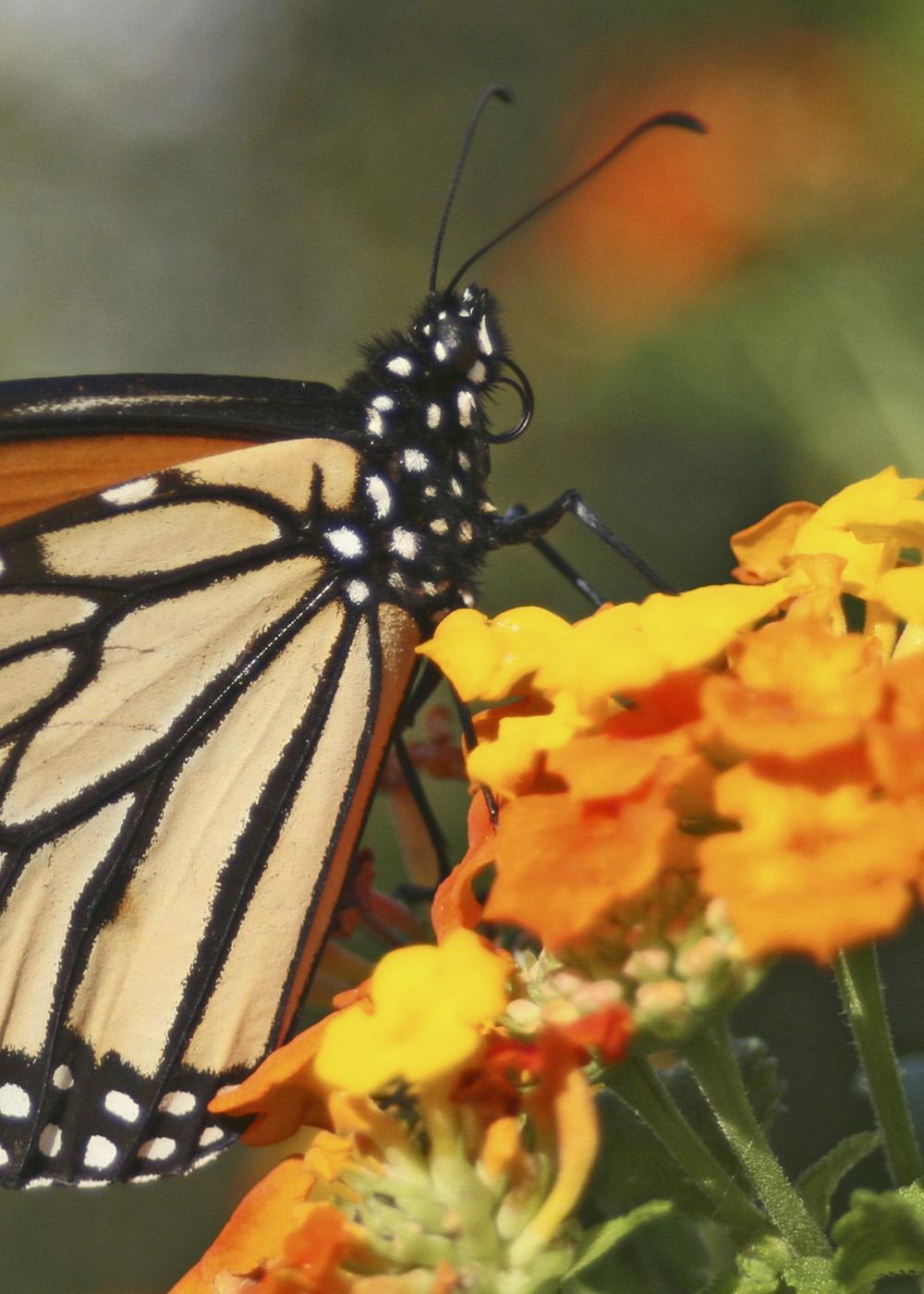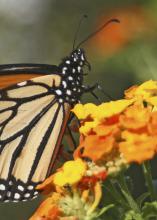Information Possibly Outdated
The information presented on this page was originally released on March 26, 2009. It may not be outdated, but please search our site for more current information. If you plan to quote or reference this information in a publication, please check with the Extension specialist or author before proceeding.
Butterflies benefit from agricultural buffers
MISSISSIPPI STATE -- Scientists at Mississippi State University's Forest and Wildlife Research Center are researching ways in which farmers, through the use of conservation buffers, can help keep butterfly habitats safe and healthy.
Floating across the air effortlessly, butterflies flutter from flower to flower, providing scientists with a glimpse of an ecosystem's health. Butterflies help gauge environmental conditions, serve as a food source for birds and wildlife, and like honeybees, pollinate plants. This last function is vital, as one-third of the food produced for human consumption is dependent on native pollinators.
“Upland habitat buffers are strips of native grasses and wildflowers planted along agricultural field margins,” said MSU wildlife and fisheries assistant professor Sam Riffell. “These strips are widely planted, often to protect waterways from erosion or agrichemicals.”
Farmers receive financial assistance to create buffers through a number of conservation programs sponsored by the U.S. Department of Agriculture.
Riffell and colleague Wes Burger, MSU wildlife and fisheries professor, initiated a study to understand habitat requirements for butterflies, measure their abundance and determine the species diversity in agricultural field borders planted in conservation buffers. The research also explored the effects of conservation buffers on birds and invertebrates.
MSU wildlife and fisheries graduate student Jolie Goldenetz conducted butterfly counts on agricultural lands in north Mississippi during the summers of 2005 through 2008. Goldenetz found 45 different species of butterflies in the conservation buffers surrounding cropland.
“Our findings suggest that buffers benefit bird and butterfly communities while also reducing erosion, pesticide drift and native plant loss,” Riffell said.
Riffell explained that this information is significant because the lack of suitable habitat in large agricultural landscapes causes butterfly species to struggle for survival.
Funded by the Natural Resources Conservation Service Agricultural Wildlife Conservation Center, the research found that buffers provide the necessary habitat for butterflies to complete their life cycles. Thus, the butterflies are able to provide benefits within the ecosystem.
“The large number of species is likely related to the increased plant diversity found in the buffers,” Burger said. “The native grasses and wildflowers planted in the buffers are the same species found naturally at Mississippi and Alabama Blackbelt prairie sites.”
Butterflies are attracted to these plants more than to agricultural crops.
“Habitat specialists also increased from four to 13 species during the four-year survey. Habitat specialists are species that depend on specific plants for survival and reproduction,” Riffell said.
Work on the project is not yet complete. MSU scientists are still investigating the importance of butterflies to the ecosystem and the linkages between butterflies and other wildlife and plant species. When all the information has been gathered, scientists will make recommendations on how farmers and ranchers can best manage agricultural lands to enhance wildlife benefits and earn additional income.
“The results are timely,” Burger said. “Honeybee hives throughout the United States are disappearing through colony collapse disorder. Conservation buffers provide a solution for increasing native pollinators and improving habitat while providing financial benefits to farmers.”



